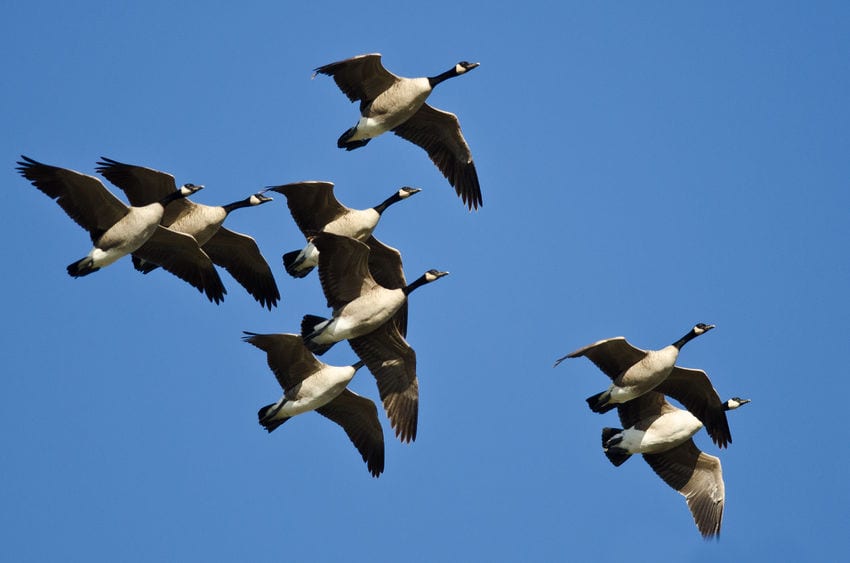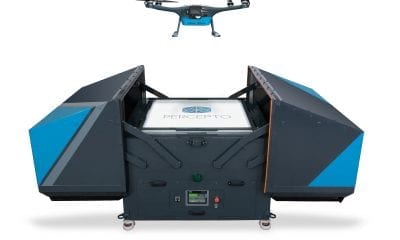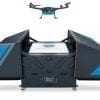
Autonomous
Researchers Teach a Drone to Autonomously Drive Birds Away From Airports
Researchers Teach a Drone to Autonomously Drive Birds Away From Airports

Source: Caltech
Drones can be a nuisance around airports, but there are instances where birds have been equally dangerous.
In 2009, flight 1549 departing from New York City flew into a flock of geese, losing all engine power as a result and forcing an emergency landing in the Hudson River.
Now, a team of engineers at the California Institute of Technology have taught a single drone to herd a flock of birds to ensure with a view to ensuring such an incident does not happen again.
Soon-Jo Chung, principal investigator on the drone herding project is an associate professor of aerospace and Bren Scholar in the Division of Engineering and Applied Science as well as a JPL research scientist.
“The passengers on Flight 1549 were only saved because the pilots were so skilled,” says Chung.
“It made me think that next time might not have such a happy ending. So I started looking into ways to protect airspace from birds by leveraging my research areas in autonomy and robotics.”
The FAA says that from 1990 to 2012, bird strikes at airports accounted for $639 million of economic loss.
Currently, birds are discouraged from entering managed airspace around airports via a range of tactics, such as making changes to habitats near the airports, and in some cases repelling the birds with sonar, piloted drones, trained falcons or even by shooting non-lethal objects at flocks.
Chung says that often these methods are costly—and in the case of manually flown drones—unreliable.
“When herding birds away from an airspace, you have to be very careful in how you position your drone. If it’s too far away, it won’t move the flock. And if it gets too close, you risk scattering the flock and making it completely uncontrollable. That’s difficult to do with a piloted drone.”
While an assistant professor at the University of Illinois, Chung received a National Science Foundation CAREER Award to tackle the problem.
He had originally intended to develop a bird-like robot that could guide itself and mimic the flight of a falcon, thinking that a bio-inspired drone would be more effective at controlling flocks.
This thinking eventually led him down another path, and in 2017 Chung revealed he had created a ‘Bat Bot‘ capable of flexing, extending and twisting its wings at the shoulder, elbow and wrist.
However, he also discovered that an off-the-shelf drone is effective at herding birds, and decided to teach the drone to do this autonomously.
Herding animals depends on the capacity to deal with a group as a single entity—keeping it together while moving its course of movement.
Each creature in a group responds to changes in the direction of those closest to it.
To herd effectively, an external ‘threat’ is required—such as a cattle dog herding a flock of sheep.
For a drone to herd flying brids—it must position itself such that it diverts the birds on the edge of the flock, affecting in turn the ones near it and then further inside the flock.
The positioning however must be exact, because if one bird panics, the flock integrity can be lost.
To teach the drone to do this effectively, Chung and his colleagues, including former graduate student Aditya Paranjape of Imperial College London, studied and developed an algorithm of flocking dynamics to describe how flocks come together and then maintain formation, as well as how they respond to threats, and how they then communicate that threat through the flock.
Their work builds on calculations already designed for herding sheep, creating a three dimensional model as opposed to two dimensional one required for sheep herding.
“We carefully studied flock dynamics and interaction between flocks and pursuers to develop a mathematically sound herding algorithm that ensures safe relocation of flocks using autonomous drones,” says Kyunam Kim, postdoctoral scholar in aerospace at Caltech and a co-author of the IEEE paper.
Having created a working algorithm, Chung and his team then reverse engineered it to see how a flock would respond approaching threats, using that data to create a an ideal herding path for a drone.
“My previous research focused on spacecraft and drone swarms, which turned out to be surprisingly relevant for this project,” Chung says
They then tested the autonomous algorithm at a field in Korea, successfully keeping a flock of many dozens of birds out of a designated airspace.
While the effectiveness of the algorithm is limited by the number and size of the birds in any given flock, Chung says that the team is exploring ways to scale up the project so that one day, multiple drones may work together to protect airports from birdstrike.























